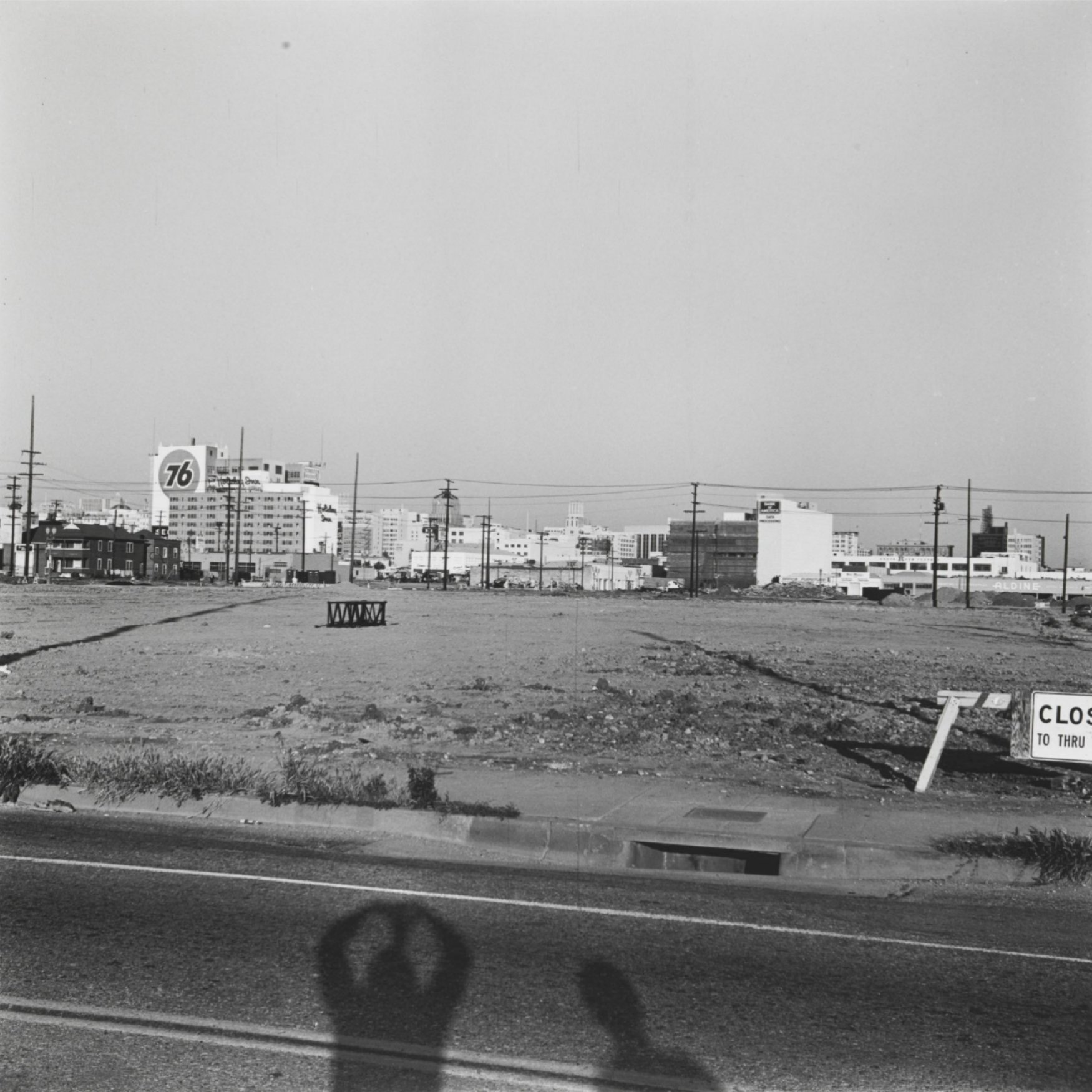
This September, the Museum of Modern Art in New York will open “Ed Ruscha / Now Then,” a comprehensive retrospective of Ruscha’s remarkable, 65-year career, which will run through January 2024.
In Artnet’s Important Photographs auction, now live though March 30, several works speak to the lasting influence of the American master Ed Ruscha within the world of photography. In addition to four gelatin silver prints from Rushca’s Vacant Lots series, the sale includes Vik Muniz’s homage to Ruscha’s Burning Gas Station (1965–66) as well as Stephen Shore’s Ruscha-inspired El Paso Street, El Paso, Texas, July 5, 1975.
Ed Ruscha, Vacant Lots (Four works) (1970)
Ed Ruscha, Vacant Lots (Four works) (1970). Est. $10,000–$15,000.
As a photographer, Ed Ruscha’s work typically captures seemingly everyday images—views from his travels and scenes from across the country, particularly in his new home of Los Angeles. Moving to L.A. after growing up in Nebraska and Oklahoma City, Ruscha was drawn to the urban sprawl and architectural language of Southern California.
His Vacant Lots series depicts empty spaces on the outskirts of Los Angeles in 1970. The series was printed in 2003 in an edition of 35, with each work titled to note their locations. With symbols such as the 76 Gas logo, the images speak to California’s urban sprawl and car culture—two essential themes in Ruscha’s oeuvre—as well as Rucha’s uniquely deadpan representation of banal urban landscapes.
Vik Muniz, Burning Standard, after Ed Ruscha (from Pictures of Cars) (2008)
Vik Muniz, Burning Standard, after Ed Ruscha (from Pictures of Cars) (2008). Est. $30,000–$50,000.
Drawing from Ruscha’s numerous paintings of another gas station, the Standard Station, contemporary Brazilian artist Vik Muniz appropriates the motif in his own series titled Pictures of Cars. Here, Muniz reinterprets iconic Ruscha paintings like 20th Century Fox (1962) and, as with this particular lot, Burning Gas Station.
In Burning Standard, after Ed Ruscha (from Pictures of Cars) (2008), Muniz references Rucha’s road tripping legacy as well as cross-medium experimentation by using gnarled scrap metal to represent the station on fire. Also taking inspiration from Ruscha, Muniz presents his work in series to blend commercial imagery and fine art.
Stephen Shore, El Paso Street, El Paso, Texas, July 5, 1975 (1975)
Stephen Shore, El Paso Street, El Paso, Texas, July 5, 1975 (1975). Est. $15,000–$20,000.
Ruscha famously documented road trips across America, which, on his return, would be presented in books printed in large editions—a well-known example being Twentysix Gasoline Stations (1963).
In the late 1960s, a young Stephen Shore first encountered the photographs of Ed Ruscha when curator Kasper Koenig brought him one of Ruscha’s books. Shore was inspired by his innovatively spontaneous and banal photographs: “Ruscha’s work may have caused irritation in some parts of the art world,” stated Shore, “but for me and my friends his books were a delight.”
As he embarked on road trips similar to those that Ruscha conducted in previous decades, Shore developed his style, documenting his travels in rich color. At the time, color photography was associated with commercialism, advertising, and popular culture rather than fine art. Whereas Ruscha’s conceptual photographs were printed in black-and-white, Shore pursued American views in vivid color to mimic real life. His transformation of quotidian scenes heavily influenced the consideration of color photography as fine art.
As Ruscha’s simple titles document the locations of the Vacant Lots, Shore too applies a similar cataloging, basing his titles on the location and exact date of the image. In 2015, the Museum of Modern Art in New York held a major retrospective of Shore’s work. Although the museum has been collecting pieces by Ruscha since 1968, they will not have held a solo exhibition of this seminal artist’s work until the forthcoming show slated for later this year.
Browse these works and more from artists like Wolfgang Tillmans, David Yarrow, and Lalla Essaydi in the Important Photographs auction, now live through March 30, 2023.